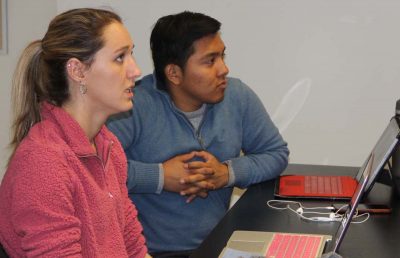
By Judy Benson
After taking a pounding from Hurricane Irene and Superstorm Sandy in 2011 and 2012, the shoreline town of Old Lyme joined other nearby communities in systematically assessing vulnerabilities to be better prepared for the next big storm.
“We wanted to identify the possible and probable impacts, the costs, and how to deal with them,” said David Roberge, the town’s fire marshal and director of emergency management.
There was both a public safety and an economic purpose to the effort. Reducing hazards wherever possible could not only prevent future harm to homes, businesses and residents, it could also save them money now. That’s because, with some 12 miles of coast on Long Island Sound and the mouth of the Connecticut River, many residents own properties in areas prone to flooding and storm surge. That means they must carry flood insurance if they have a mortgage, a costly requirement of the Federal Emergency Management Agency.
“If we could reduce their cost by five to 10 percent, that would be a significant benefit to homeowners,” Roberge said.
Through a FEMA program called the Community Rating System, such discounts are available. But completing all the work to qualify required manpower the town didn’t have, until UConn students Judy Taylor, Tao Wu, Casey Lambert and Jeff Hoyt were teamed up with the town of Old Lyme through the Climate Corps’ independent study during the spring semester.
“We’re trying to get them enrolled in the FEMA Community Rating System, because for everybody who has to have flood insurance, the premiums can be pretty high,” said Taylor.
Taylor, Wu, Lambert and Hoyt are among students getting real-world experience helping towns meet the challenges of rising sea levels and more frequent and intense storms in a new course titled “Climate Resilience and Adaptation: Municipal Policy and Planning.” After spending the fall semester learning how climate change is impacting local communities, they spent the spring semester applying what they learned in individual towns.
“Working with a municipality has definitely taught me a lot of problem-solving skills,” said Nadia Balkaran, who worked with fellow student Pan Zhang to create a “Climate Proof Your Neighborhood” brochure for the Earle Street-Brackett Park area of Hartford.
Helena Ives, another student in the class, wrote a resilience plan for a coastal marsh preserve in Stonington Borough. Adelaine McCloe, Brook Siegel, Lucas

Cummings and Tony Arreaga, meanwhile, put their efforts into creating a plan to help shoreline communities protect some of their most valuable properties that are also at greatest risk – the neighborhoods of beaches, marinas and waterfront homes. They produced a guide that is applicable in many shoreline towns with those features.
Bruce Hyde of UConn CLEAR, who taught the class with Juliana Barrett of Connecticut Sea Grant, said the lessons of the class have gone beyond the specifics about climate change impacts to broader life skills.
“They’re learning how to be adaptable,” Hyde said. The class, offered through the Department of Natural Resources and the Environment, is scheduled again next fall and spring, he said, with some improvements based on the experiences of this first year.
For the Old Lyme project, Taylor, Wu, Lambert and Hoyt compiled a 16-page list of activities the town could take to become eligible for the Community Rating System discounts on flood insurance. These range from those that present the biggest challenges – like relocating buildings subject to repeated flooding – to the “low hanging fruit,” as Roberge put it, of projects that would be easy and inexpensive for the town to accomplish. One of these is creating maps of flood-hazard areas and open space preserves. The five-tiered, color-coded guide also lists projects the town has already completed that could earn points on the Community Rating System.
“This is like a roadmap for us,” Roberge said. “It’s a good foundation, a good starting point for us to take it to the next level.”
Taylor, Wu, Lambert and Hoyt said getting to apply the lessons they learned in the classroom to the specific needs of Old Lyme added a new dimension to their education.
“I had a lot of fun working with my group and I learned so much about climate change and working with the municipalities,” said Hoyt, who will be pursuing a master’s degree in environmental science at the University of New Haven in the fall. “This was an experience I will never forget.”
Taylor, who recently accepted a job as a catastrophe risk analyst with a Boston insurance company, said the class opened new doors for her career. The field experience, she said, was invaluable.
“It really provides meaning to the work you’re doing,” she said.
Judy Benson is the communications coordinator with Connecticut Sea Grant.